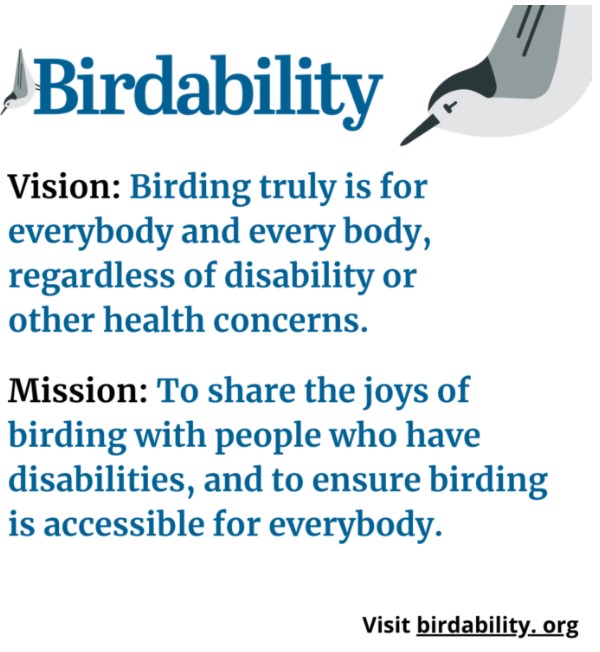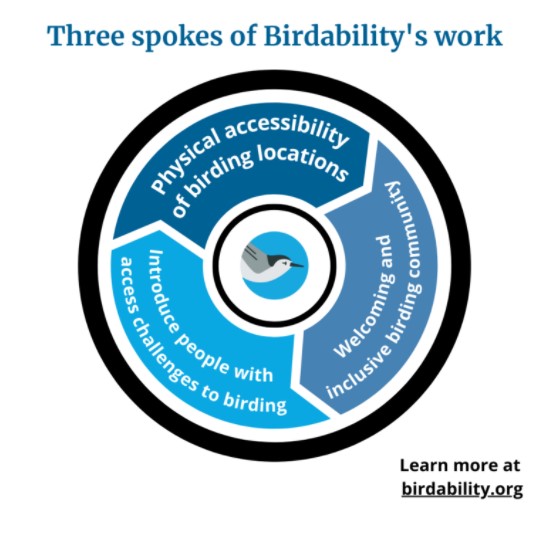Birdability

Through education, outreach and advocacy, Birdability works to ensure the birding community and the outdoors are welcoming, inclusive, safe and accessible for everybody. The program focuses on people with mobility challenges, blindness or low vision, chronic illness, intellectual or developmental disabilities, mental illness, and those who are neurodivergent, deaf or hard of hearing or who have other health concerns. In addition to current birders, Birdability strives to introduce birding to people with disabilities and other health concerns who are not yet birders so they too can experience the joys of birding.
Helpful resources from Birdability:

- Improve the physical accessibility of birding locations. This includes trails, bird blinds, observation platforms, feeder stations and car birding routes.
- Access Considerations for Birding Areas Guidance Document shares, in detail, what features make up a truly accessible birding location.
- The Birdability Map is a crowd-sourced map sharing detailed accessibility information for reasonably accessible birding locations, so folks can find out ahead of time the information they may need to plan a successful outing.
- Empower a welcoming and inclusive birding community.
- Introduce people with access challenges to birding. ‘Build it and they will come’ might work sometimes, but it’s no guarantee. We encourage bird clubs, nature centers, Audubon chapters and everyone else to intentionally reach out to local disability support groups and other organizations and actively invite folks with disabilities and other health concerns to come and share the joys of birding with you!
- Steps to Implement Accessible and Inclusive Birding is the place to start.
“We need our physical environment to be accessible, and we need our social, cultural and institutional environments to be welcoming, safe and inclusive for all those potential new birders so they know they are genuinely wanted, and to make sure they come back! We work on these three spokes simultaneously to help ensure that birding truly is for every body.”
Birdability
How land trusts can use Birdability resources:
Birdability is a wonderful hub of information about how to make nearly everything your organization does more accessible to everyone. Birdability is also unique in the way it frames many issues of access within the conservation world. Land trusts may use these guides to write inclusive language for their website, when describing events, or creating signage for land trust properties or projects. Land trusts may also consider using Birdability’s accessibility guides when building trails and other infrastructure so that anyone who would like to volunteer has the ability to do so. For example, a wheelchair accessible trail or installation of benches might mean a new swath of volunteers to conduct eBird surveys at land trust properties.


